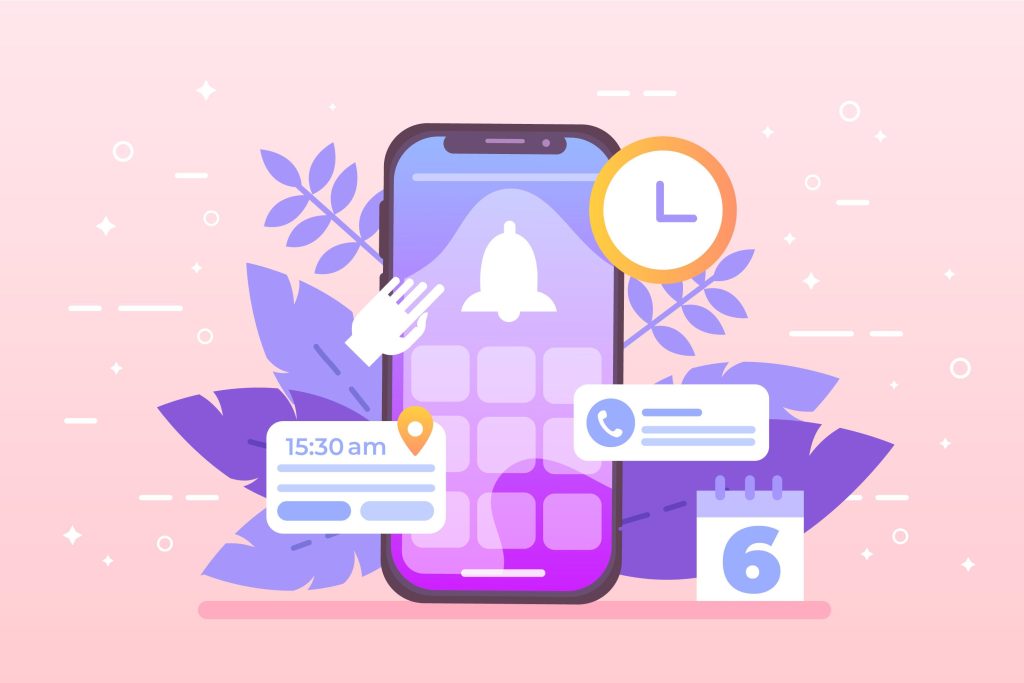In a world where nearly every app and platform demands attention, the question “when do notifications help and when do they harm?” has never been more urgent. Notifications can keep us informed, nudge us toward action, or remind us of important tasks—but they can also derail our focus, amplify anxiety, and lead to decision fatigue. Understanding the line between helpful and harmful alerts has become essential for maintaining both productivity and well-being in the digital age.

The Rise of the Notification Economy
From social media pings to breaking news alerts and fitness reminders, digital notifications are woven into modern life. According to a 2023 report by Deloitte, the average smartphone user receives between 45 and 80 push notifications per day. Some are useful, but many are not. This constant barrage of updates forms what researchers now call the “notification economy”—a system where attention is a commodity and apps compete to capture it.
The central issue? Notifications are no longer neutral. They carry intent. Whether it’s a ping to re-engage with an app or a prompt to check a message, every alert is a behavioral nudge. This makes distinguishing between what’s helpful and what’s harmful increasingly complex.
When Notifications Help: Driving Awareness and Action
Not all notifications are distractions. In fact, under the right conditions, they can support mental performance and behavioral follow-through.
1. Task-Related Reminders
Notifications tied to calendar events, deadlines, or task lists can serve as crucial nudges. These alerts support prospective memory—our ability to remember to do something in the future. Without them, it’s easier to forget appointments, skip tasks, or miss critical deadlines.
2. Health and Safety Alerts
From reminders to take medication to emergency alerts about severe weather, certain notifications have direct health and safety implications. Studies show that medication adherence improves significantly when patients receive consistent, well-timed reminders (Source: Journal of Medical Internet Research, 2021).
3. Workflow Optimization
Apps like Slack or Trello use smart notifications to streamline communication. Customization features—such as setting alert frequency or silencing during deep work—allow teams to stay updated without constant disruption.
When Notifications Harm: Distraction, Anxiety, and Burnout
The darker side of the notification equation lies in overexposure. When poorly timed or excessive, notifications can chip away at cognitive capacity, mood, and decision-making.
1. Attention Fragmentation
Each alert breaks the flow of concentration. Research from the University of California, Irvine, shows it takes an average of 23 minutes to refocus after a distraction. Repeated interruptions from alerts—especially during cognitively demanding work—create what’s known as switch cost, where productivity and accuracy decline.
2. Anxiety and Stress Response
Notifications can elevate cortisol levels, especially when they involve unread messages, missed calls, or urgent-looking alerts. A 2020 study published in Computers in Human Behavior linked notification frequency with increased heart rate variability and self-reported stress.
3. Sleep Disruption
Even nighttime notifications have consequences. The blue light from screens, coupled with the mental stimulation from alerts, can delay melatonin production and disrupt sleep patterns. Many sleep experts now recommend enabling “Do Not Disturb” modes or turning off notifications entirely at night.
Emerging Trends: Smarter, Context-Aware Notifications
With increased awareness of notification fatigue, developers and platforms are beginning to shift strategies. The emphasis is now on relevance over volume.
1. AI-Powered Filtering
Modern notification systems use machine learning to adapt to user behavior. Gmail’s tabbed inbox, for example, learns which emails are high-priority and adjusts alerts accordingly. Similarly, calendar apps now suggest the best times for meetings based on availability and existing task loads.
2. Focus Modes and Notification Bundling
Operating systems like iOS and Android have introduced Focus and Do Not Disturb modes. These allow users to bundle non-urgent notifications and deliver them during scheduled breaks, reducing the number of interruptions during high-focus tasks.
3. User-Centered Customization
Apps increasingly offer granular control over notifications. Rather than all-or-nothing toggles, users can specify notification types (e.g., “reminders only,” “mentions only”) or set work-hour windows. This reflects a larger shift toward intentional engagement rather than constant alerting.
A Practical Guide to Managing Notifications
So, when do notifications help and when do they harm? The answer often comes down to timing, relevance, and volume. Here’s how you can manage your digital alerts for better focus and balance:
1. Audit Your Notifications
- Go through your phone and app settings.
- Disable non-essential notifications, especially from social media, news apps, and games.
- Keep only those that are time-sensitive or personally important.
2. Use Focus Tools
- Enable Focus Mode, Do Not Disturb, or Scheduled Summary features during deep work, meals, or rest hours.
- Some productivity apps allow “batching,” where alerts are grouped and delivered only at set times.
3. Set Notification-Free Hours
- Protect your mornings or evenings from unnecessary pings.
- Try using your phone’s downtime settings to block access to high-distraction apps during these periods.
4. Separate Work and Personal Alerts
- Use different apps, or at least separate notification categories, for work and personal life.
- Silence work alerts during personal time, and vice versa, to prevent context switching.
Final Thoughts
The question “when do notifications help and when do they harm?” requires a personalized answer. Alerts can be productivity boosters or focus killers, depending on how they’re configured and consumed. As we navigate a future shaped by digital interaction, the ability to manage our attention may prove just as important as managing our time. Creating a conscious boundary between helpful alerts and digital noise is no longer optional—it’s foundational to modern well-being.
References
- Deloitte Global Mobile Consumer Survey, 2023 – https://www2.deloitte.com/
- Mark, G., Gudith, D., & Klocke, U. (2008). “The Cost of Interrupted Work” – University of California, Irvine.
- Kushlev, K., Proulx, J., & Dunn, E.W. (2020). “Silence Your Phones: Smartphone Notifications Increase Inattention and Hyperactivity” – Computers in Human Behavior.
- Bol, N., & Kelders, S. (2021). “Digital Interventions for Medication Adherence” – Journal of Medical Internet Research.
- Apple iOS Support – Focus Mode Overview – https://support.apple.com/






